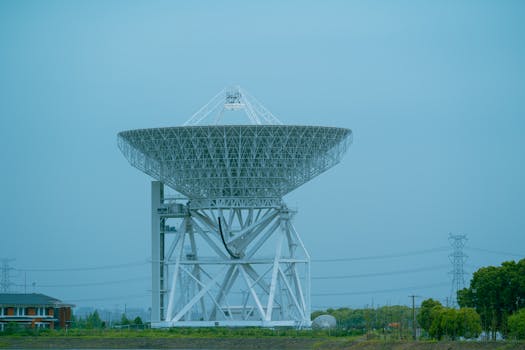Orbiting Innovations: Key Updates in Satellite Telecommunications Technology
The latest advancements in satellite telecommunications technology are revolutionizing the way we communicate, with faster speeds, lower latency, and greater connectivity. In this article, we’ll explore the key updates in this field and their impact on the future of telecommunications.

Orbiting Innovations: Key Updates in Satellite Telecommunications Technology
Orbiting Innovations: Key Updates in Satellite Telecommunications Technology, the satellite telecommunications industry has experienced significant growth and innovation in recent years. The latest advancements in technology have enabled faster speeds, lower latency, and greater connectivity, making satellite telecommunications a vital component of modern communication systems. In this article, we’ll delve into the key updates in satellite telecommunications technology and their impact on the future of telecommunications.
The use of satellites in telecommunications has been around for decades, but recent advances in technology have transformed the industry. One of the most significant developments is the launch of low-Earth orbit (LEO) satellites, which offer faster speeds and lower latency compared to traditional geostationary satellites. LEO satellites are placed in orbit at an altitude of around 1,200 kilometers, which allows them to reduce the signal transmission time and provide faster data transfer rates.
Advances in Satellite Technology
Several companies, including SpaceX, OneWeb, and Amazon’s Kuiper Systems, are launching constellations of LEO satellites to provide global internet coverage. These satellites are equipped with advanced technologies such as phased arrays, digital beamforming, and advanced propulsion systems, which enable them to provide high-speed internet connectivity to remote and underserved areas. The use of LEO satellites also enables the provision of real-time communication services, including voice, video, and data transfer.
Another significant development in satellite telecommunications is the use of high-throughput satellites (HTS). HTS satellites are designed to provide high-speed internet connectivity to a large number of users, making them ideal for applications such as broadband internet access, mobile backhaul, and enterprise networks. HTS satellites use advanced technologies such as spot beams and frequency reuse to increase the amount of data that can be transmitted through a single satellite.
Impact on the Future of Telecommunications
The advancements in satellite telecommunications technology are expected to have a significant impact on the future of telecommunications. With the launch of LEO satellites and HTS satellites, the demand for satellite-based internet connectivity is expected to increase, particularly in remote and underserved areas. The use of satellites will also enable the provision of real-time communication services, including voice, video, and data transfer, which will be critical for applications such as telemedicine, online education, and emergency response.
The growth of the satellite telecommunications industry is also expected to drive innovation in other areas, such as the development of new satellite technologies, the creation of new business models, and the formation of new partnerships and collaborations. The use of satellites will also enable the provision of connectivity to devices and sensors, which will be critical for the development of the Internet of Things (IoT).
Challenges and Opportunities
Despite the many advancements in satellite telecommunications technology, there are still several challenges that need to be addressed. One of the main challenges is the issue of interference, which can occur when multiple satellites are operating in the same frequency band. The use of LEO satellites also raises concerns about space debris and the potential for collisions with other satellites or objects in orbit.
However, the opportunities presented by satellite telecommunications technology far outweigh the challenges. The use of satellites will enable the provision of connectivity to remote and underserved areas, which will be critical for bridging the digital divide and promoting economic development. The growth of the satellite telecommunications industry is also expected to create new job opportunities and drive innovation in other areas, such as the development of new satellite technologies and the creation of new business models.



